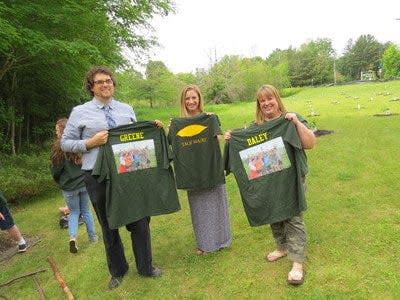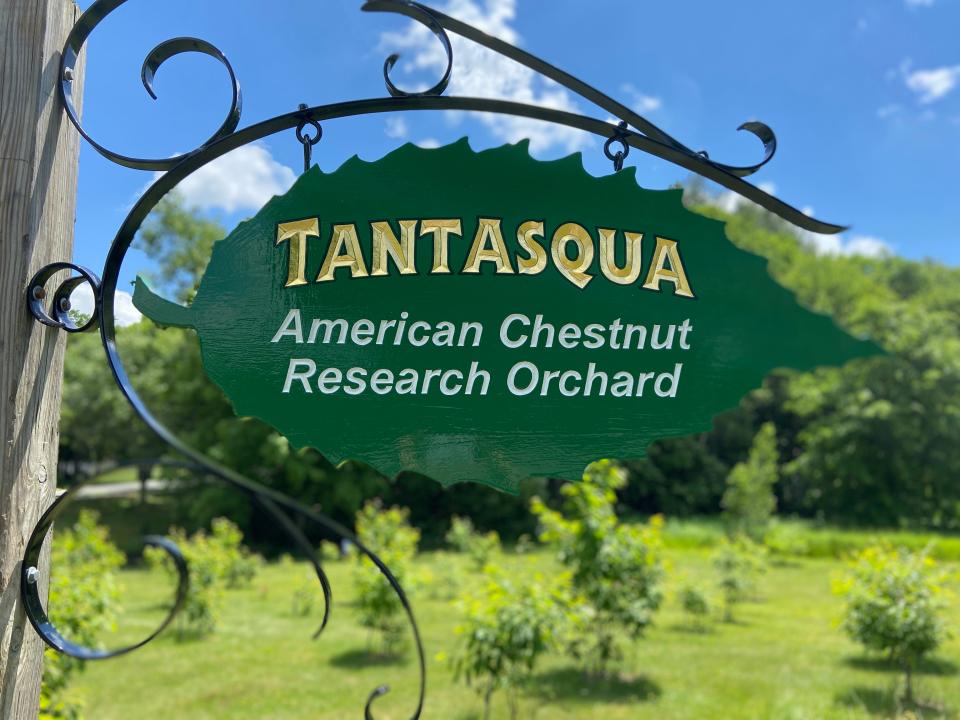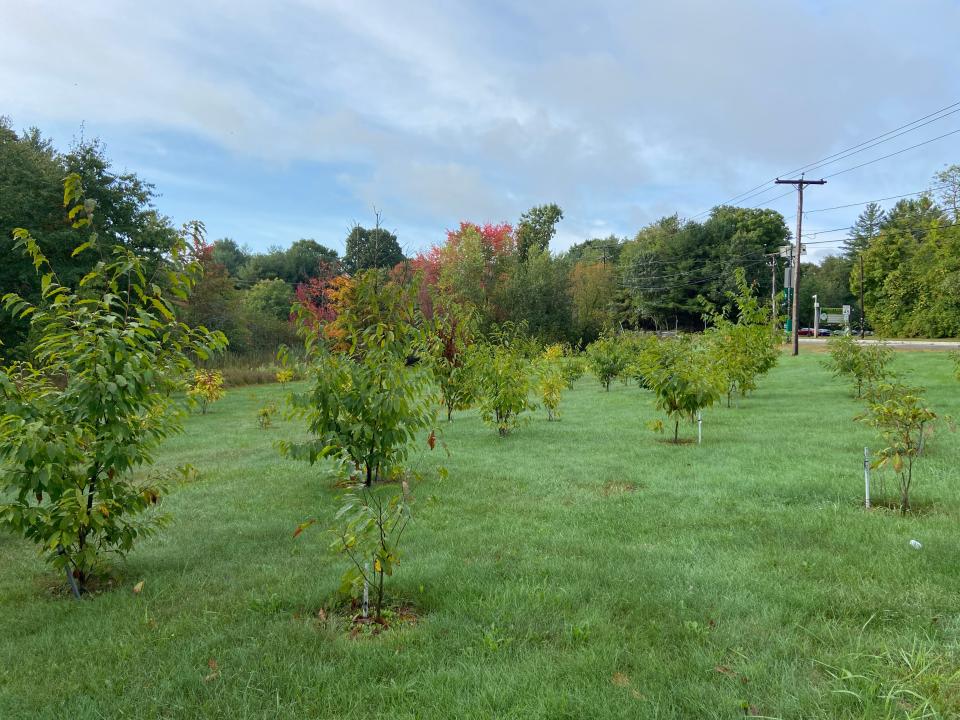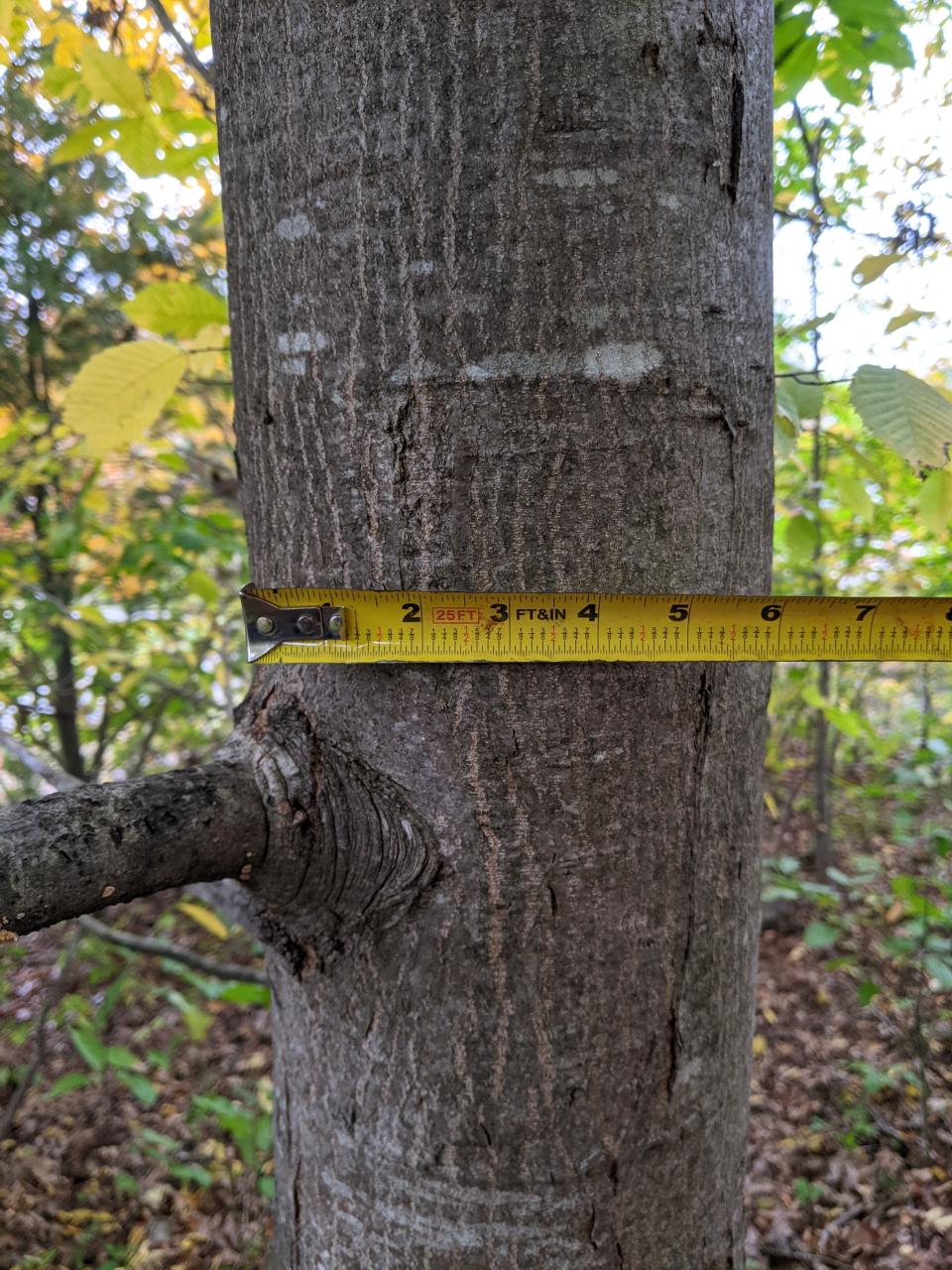Back from extinction: Tantasqua middle schoolers work to revive American chestnut tree

FISKDALE — Bringing a species back from extinction is normally considered impossible outside of the "Jurassic Park" movie series.
Although the students working at the Tantasqua American Chestnut Research Orchard aren't resurrecting dinosaurs, they have helped bring back a keystone species to the local ecosystem that has been extinct for over 70 years.
“Chestnut trees were functionally extinct,” said Jesse Greene, who teaches grade 7 science and ecology at Tantasqua Regional Junior High School.
A fungus blight brought over with Chinese chestnuts wiped out the local species between 1950 and 1960.

Using seeds recovered from surviving root systems on the slopes of Mount Ella in Monson, Greene and fellow science teacher Kristin Daley Conti have been working with their students since 2015 to not only revive, but also improve the American chestnut tree.
Having established a research orchard at the school, the Tantasqua chestnut tree project, in collaboration with the American Chestnut Foundation, aims to breed a tree that is not only blight-resistant but also better adapted to New England’s cold weather.
The orchard houses nearly 200 of these potential hybrids.
The idea for the project began more than a decade ago, after a 2011 tornado that cleared the oak trees on the slopes of Mount Ella. Greene, who lived nearby, soon noticed that the trees growing back were not oak but chestnut.
The fungus had attacked the aboveground parts of the tree but had left the chestnut root system intact.
“You could have 100-year-old roots under the soil and as soon as they have enough sunlight, they make a go of it,” said Greene.
While he called it a “significant find,” if nothing was done it would be a short-lived return, as the new trees would both be outcompeted by other trees as well as fall victim to the blight within 10 years.
Major food source for wildlife
The American chestnut is considered a keystone species, being a major food source for a variety of wildlife. After the blight, it was replaced by oak trees, the acorns of which provided food for the same species but as a more unreliable crop before winter.
"Wildlife has probably had a lot more ups and downs in getting food in the fall," said Greene.

Also, the return of a native species, "will make an ecosystem more diverse and resilient to future environmental changes," he said.
Sharing his findings with Conti, the two realized this would be an ideal hands-on lesson in ecology for their classes, and met with members of the local American Chestnut Foundation chapter to brainstorm how students could help.
In addition to almost 200 trees, the resulting orchard has provided fertile soil for a growing passion in the participating students, with many returning to the project year after year.
“It really inspired a lot of kids to be interested in not only this project but ecology and conservation in general,” said Conti. “That’s the part we’re most proud of.”
The first class that was introduced to the project in seventh grade recently graduated from high school, she said, and some of those original students still come back to help at the orchard.
The project goes beyond orchard maintenance, with students leading public presentations as well as brush clearing and reforestation efforts on-site in Monson, planting trees provided by Tantasqua American Chestnut Foundation. The club met its goal of 500 trees over five acres in spring.
“(The work) resonated because it’s real, not just a project for academic reasons,” said Greene. “There’s a mission to it and they can see what they’re doing matters out in the world.”
Attesting to the program’s popularity, the club last year was unable to accommodate the number of students interested in one of the Mount Ella field trips.

“It’s a good sign — shows they really value it,” he said. “Even during COVID, kids participated in any way that they were able.”
Conti reflected that it has become as much, if not more, the students’ project than hers or Greene’s.
“It’s weirdly uncomfortable to sit here and talk about it without them,” she said. “It’s not just the adults in this group doing the work. We’re a team.”
She said that students who learned about the chestnut trees last year are taking their knowledge outside of school. During the unit, students are encouraged to watch for any surviving chestnut trees over a certain age and size, as it would mean a natural blight resistance. Much to her surprise, two of her students each identified a purebred chestnut tree in Sturbridge and Brookfield.
Eighth grader Colin Kowal saw chestnut leaves on the ground while on a run with his father.
“I remembered them from class and thought, 'There must be an American chestnut nearby,'” said Colin, going on to describe the tree in terms of its diameter and circumference.
Seeing a chestnut tree that size is incredibly rare, he said, and means it has reached the canopy and is flowering and making seeds.
“We thought it should be preserved,” said Colin.
Added Conti: “You don’t always hear these words associated with middle school kids — passionate, articulate, responsible and great public speakers. Any of our kids could sit here and tell you this exact same information. I can’t say enough of how proud we are of them.”
This article originally appeared on Telegram & Gazette: Tantasqua Regional Junior High School students save chestnut trees

